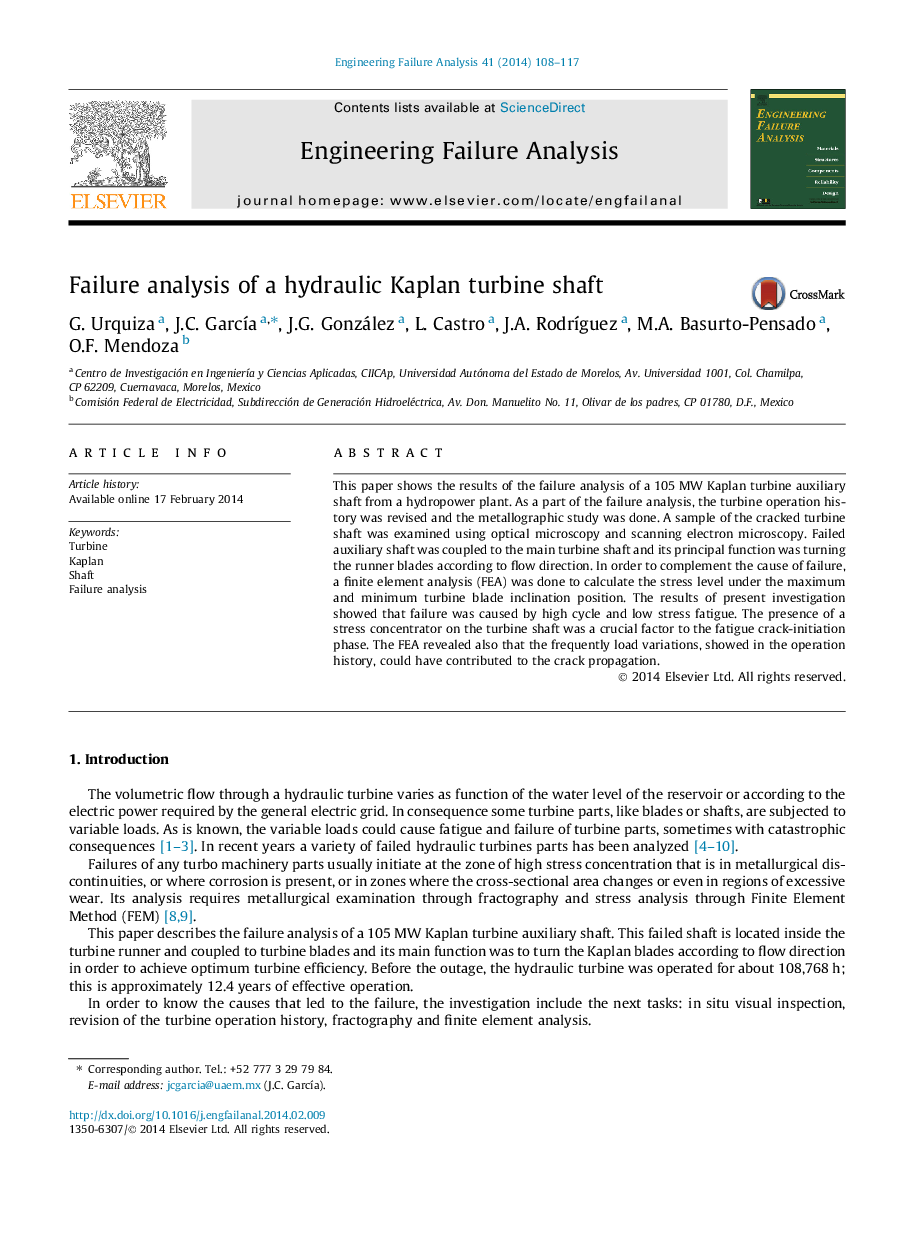| Article ID | Journal | Published Year | Pages | File Type |
|---|---|---|---|---|
| 773833 | Engineering Failure Analysis | 2014 | 10 Pages |
•Failure of a 105 MW Kaplan turbine auxiliary shaft is studied.•Optical microscopy and SEM were used to find the possible failure causes.•Stress analysis for the failed shaft was computed by a linear elastic FEA.•Failure was caused by high cycle and low stress fatigue.
This paper shows the results of the failure analysis of a 105 MW Kaplan turbine auxiliary shaft from a hydropower plant. As a part of the failure analysis, the turbine operation history was revised and the metallographic study was done. A sample of the cracked turbine shaft was examined using optical microscopy and scanning electron microscopy. Failed auxiliary shaft was coupled to the main turbine shaft and its principal function was turning the runner blades according to flow direction. In order to complement the cause of failure, a finite element analysis (FEA) was done to calculate the stress level under the maximum and minimum turbine blade inclination position. The results of present investigation showed that failure was caused by high cycle and low stress fatigue. The presence of a stress concentrator on the turbine shaft was a crucial factor to the fatigue crack-initiation phase. The FEA revealed also that the frequently load variations, showed in the operation history, could have contributed to the crack propagation.
